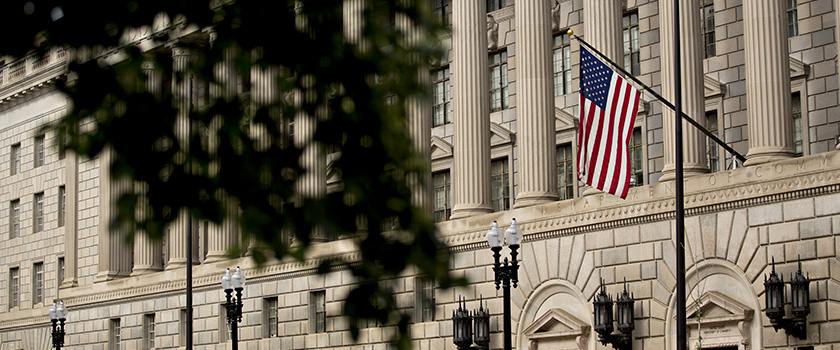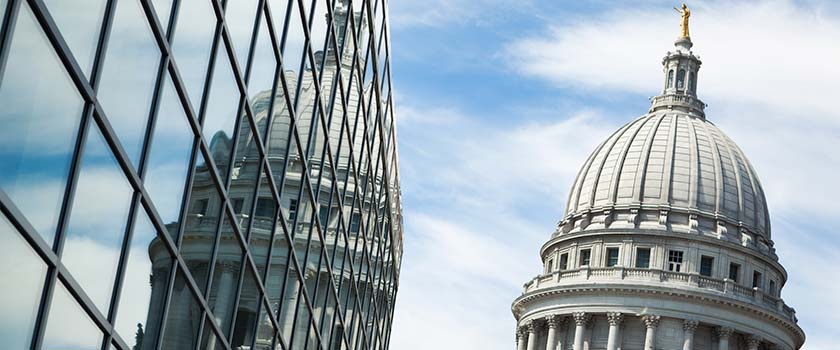After a historic US pre-election debate, commentators agree Kamala Harris has profited, while Donald Trump’s ratings slipped, but how have markets responded?
September’s US presidential debate marked a pivotal moment in the election race, particularly for vice- president Kamala Harris. After a swift rise to the Democratic nomination in August, Ms Harris needed this opportunity to re-energise momentum which had been flagging in recent weeks.
The debate allowed Ms Harris to address the dip in her campaigning momentum, drawing former President Donald Trump into fringe narratives and keeping him from focusing on topics where he polls strongly, like the economy and immigration. This prevented Mr Trump from gaining traction on issues central to not only his base but also to undecided American voters.
Market sentiment
Following the debate, financial markets reflected the high stakes of the race. Betting markets, which had seen Mr Trump’s odds improve from a 45 per cent to a 52 per cent favourite by early September, corrected quickly after the debate, fully reversing Trump’s lead and returning vice-president Harris back to the role of favourite going into the final six weeks of the campaign.
The magnitude of this reversal should not be underestimated: recall, President Joe Biden saw his probability fall from 36 per cent prior to the June debate to only 22 per cent. Former President Trump, in the aftermath of his debate with Ms Harris, has seen betting odds slide from a 52 per cent favourite to a 45 per cent underdog, a seven-percentage point slide, half of the Biden slide that caused him to exit the race.
Financial markets reacted similarly, with US Treasury yields falling, the US dollar coming under pressure, and S&P 500 futures easing as the vice-president’s performance was viewed favourably. Political events and market reactions are increasingly interconnected, with investors closely watching the unfolding political landscape.
Voter turnout
Looking ahead to November, despite the momentum of the Democratic nominee, the critical issue of voter turnout could still significantly alter the trajectory of the election. The 2022 US mid-term elections set an all- time-high benchmark for voter engagement. From that baseline, we expect more than 160m votes to be cast for control of the White House. Both parties will need to focus on maintaining and boosting turnout of their supporters to secure a victory.
For Mr Trump, his ability to broaden his base since the 2016 election has been notable, with polls suggesting he could secure as many as 76m votes in the 2024 election, nearly 20 per cent higher than in his 2016 victory over Hillary Clinton, when he mobilised previously unengaged American voters.
For the Democrats, the key challenge is avoiding the pitfalls of 2016, where voter turnout among their supporters fell, with Hillary Clinton failing to broaden the Democratic base either geographically or demographically, leading to her unexpected defeat. The importance of energising their respective bases while simultaneously appealing to swing voters will therefore be another key issue in this election.
Navigating uncertainty
From an investment perspective, adopting a risk-management approach during this period of heightened uncertainty is important. The reaction of financial markets to the debate signals that volatility may increase as the election approaches, and investors should prepare accordingly.
Safe-haven assets such as gold, hedge funds and high-quality equities can help cushion against such volatility as election day draws closer.
Gold, in particular, has historically performed well during periods of political uncertainty, offering a hedge against both inflation and unexpected political outcomes. Hedge funds, with their ability to deploy flexible strategies, can also provide insulation from market swings, while high-quality equities’ visible earnings streams offer more resilience in market downturns.
This pivot to more risk-managed positionings reflects a broader trend of caution as investors weigh the potential outcomes of the election. The possibility of increased market volatility as the campaign progresses will, we expect, highlight the benefits of well-diversified, actively risk-managed strategies that are the foundation of both preserving capital amid uncertainty and simultaneously growing wealth looking into the future.
The Trump-Harris debate has not only shaped the trajectory of the political race but also left its mark on financial markets. Political campaigns and investors will both be closely monitoring developments, with voter turnout and market volatility likely to be key factors in determining the eventual outcome. For investors, a risk-managed approach could be essential for navigating the uncertain landscape ahead.









